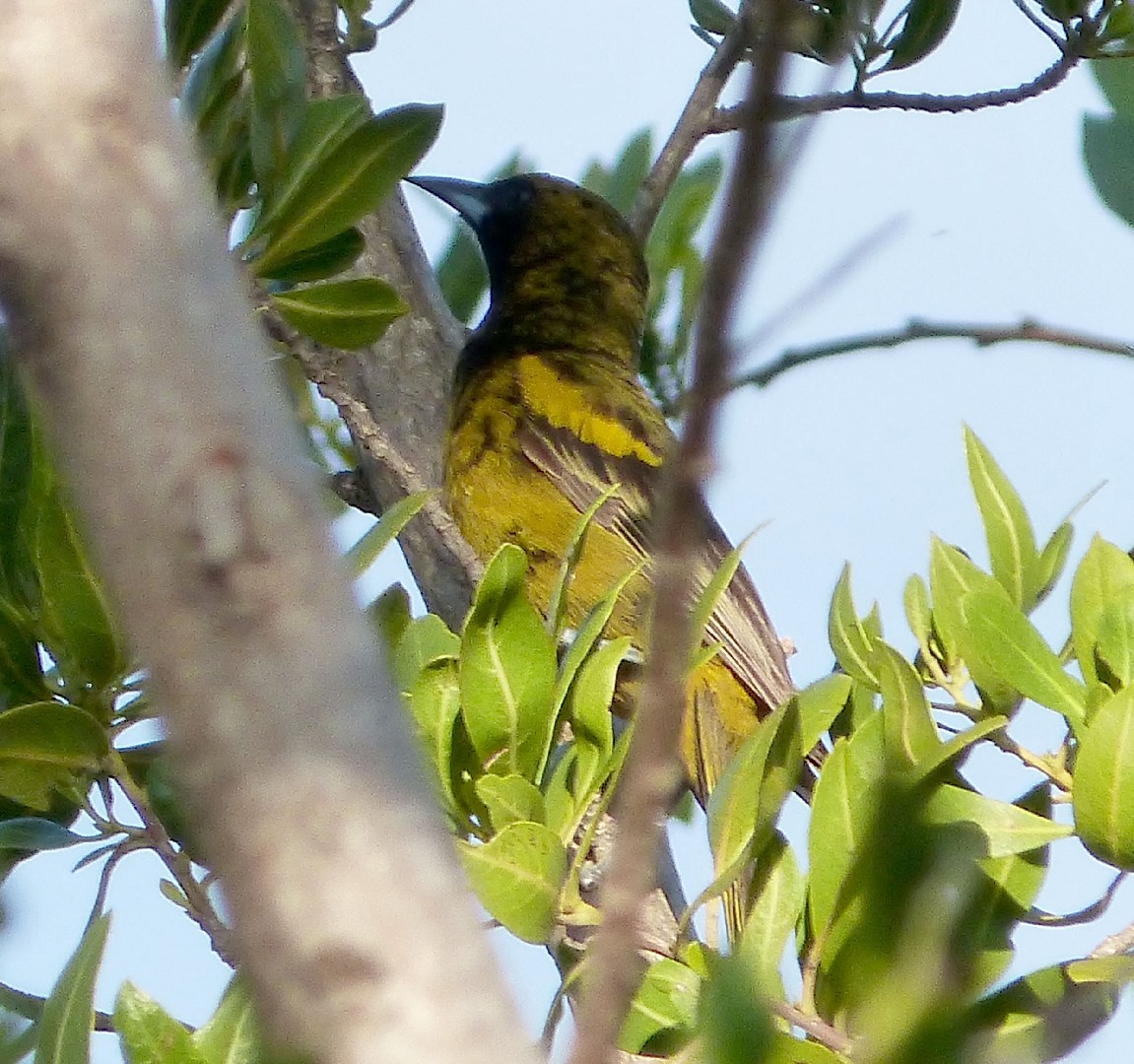Hispaniolan Oriole
A species of New world orioles Scientific name : Icterus dominicensis Genus : New world orioles
Hispaniolan Oriole, A species of New world orioles
Botanical name: Icterus dominicensis
Genus: New world orioles
Content
Description General Info
Description
The Hispaniolan oriole is a slender-billed black and yellow oriole that lacks white markings on the wings. It shows more yellow than most Caribbean orioles, except for the Bahama oriole (Icterus northropi). The adult males and females are black overall, with distinctive yellow patches on shoulders, rump, and under-tail coverts extending to the lower breast. Like most tropical oriole species, the females are similar or identical to the males in coloring. In juvenile Hispaniolan orioles, the upper parts are mainly olive, while the underparts are dull yellow. The wings are black, and the throat is sometimes a black or reddish-brown that is not clearly demarcated. The length of the Hispaniolan oriole is an average of 20–22 cm, with males weighing 35–38 g while the females weigh 33–40 g. A similar species that is often mistaken for the Hispaniolan oriole is the yellow-shouldered blackbird (Agelaius xanthomus), which is a similar size but only has yellow patches on the shoulders. 
Size
22 cm
Nest Placement
Tree
Feeding Habits
Hispaniolan Oriole enjoys a varied diet including fruits, insects, flowers, and nectar. This bird forages in the canopy, demonstrating a preference for exploiting a range of food sources, with unique adaptations for extracting nectar.
Habitat
The habitat of hispaniolan Oriole predominantly comprises tropical and subtropical broadleaf forests, especially areas with an abundance of palm trees, which are critical for nesting. These birds are also found thriving in forest edges, woodlands, and gardens. They have adapted to human-altered landscapes and are frequent in shaded coffee plantations. While they can occur from coastal regions, hispaniolan Oriole is also present up to mid-elevation mountainous areas, with sightings reported at altitudes reaching 1100 meters above sea level.
Dite type
Frugivorous
General Info
Feeding Habits
Bird food type

Fruit
Species Status
The status of the Hispaniolan oriole is listed as “Least Concern” on the IUCN Red List. Although there have been no published population assessments, there are numerous observations of the oriole all throughout the island. There is a possibility that the population could decline because of increased brood parasitism from the shiny cowbird (Molothrus bonariensis). They have been described as the “highest quality” host for the cowbird on the island. 
Scientific Classification
Phylum
Chordates Class
Birds Order
Perching birds Genus
New world orioles Species
Hispaniolan Oriole 